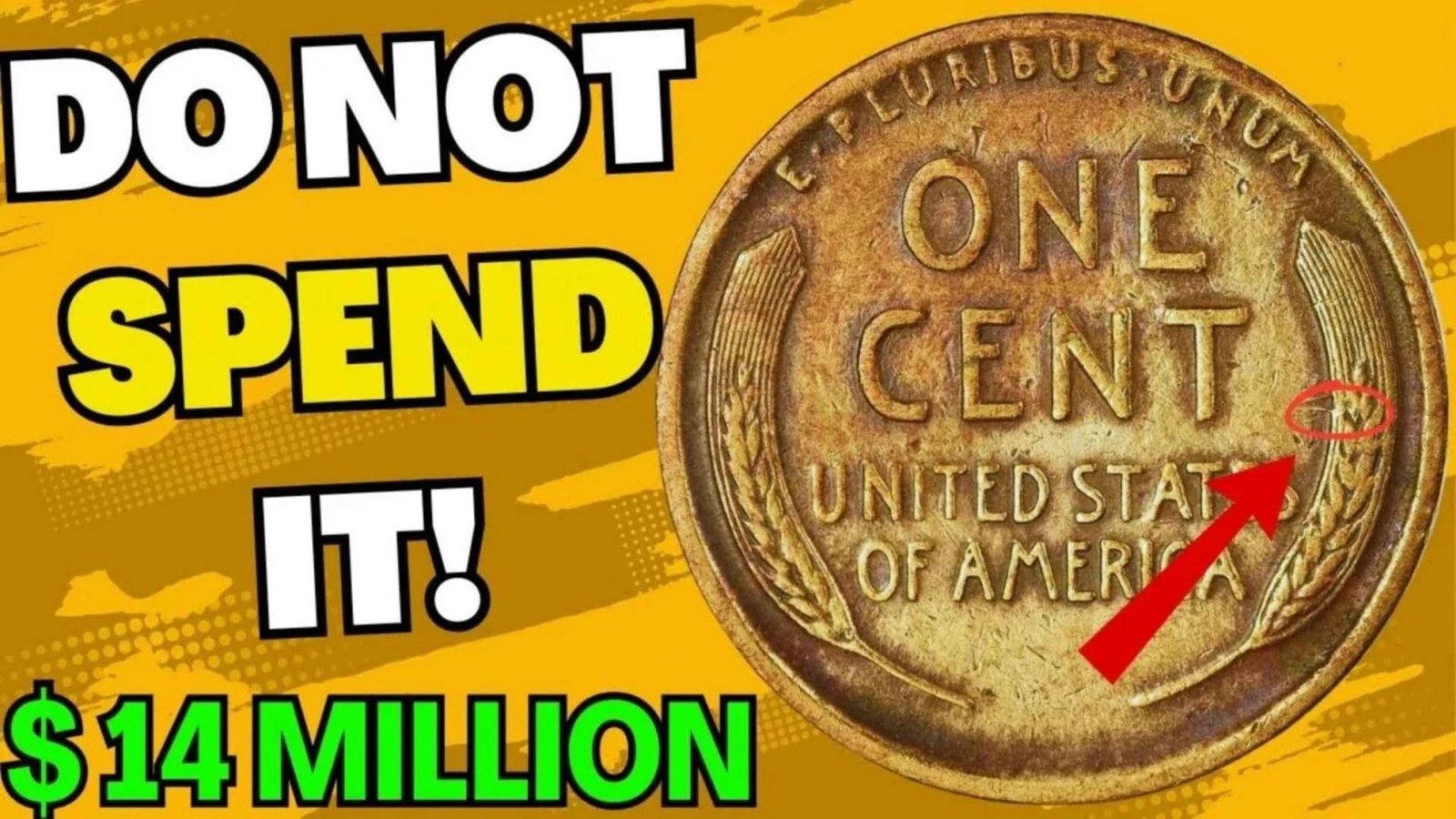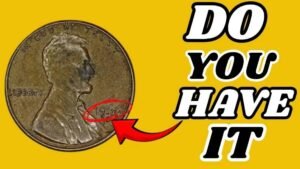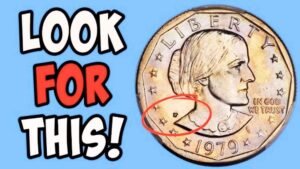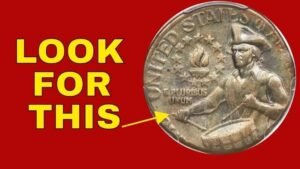you dig into your couch cushions for loose change and uncover a dusty old penny that could change your life forever. The Lincoln Wheat Penny, a humble coin from over a century ago, hides secrets of immense value. One rare version is worth a staggering $14 million—and experts say it might still be circulating among everyday money. Ready to hunt for hidden riches?
What Is the Lincoln Wheat Penny?
The Lincoln Wheat Penny is one of America’s most beloved coins. Minted by the U.S. Mint from 1909 to 1958, it honors Abraham Lincoln, the 16th president. This small copper coin replaced the older Indian Head Penny and became a daily sight in pockets and purses across the country.
A Quick History Lesson
Back in 1909, the nation celebrated Lincoln’s 100th birthday. Designer Victor David Brenner created the coin with Lincoln’s profile on the front—making it the first U.S. circulating coin to show a real person’s face. On the back, two wheat stalks symbolize America’s farming roots, earning it the nickname “Wheat Penny” or “Wheatie.”
Over nearly 50 years, billions of these pennies were made at mints in Philadelphia, Denver, and San Francisco. Most were struck from 95% copper and 5% tin and zinc, giving them a warm reddish glow. But in 1943, during World War II, the metal switched to steel coated with zinc to save copper for the war effort. This change led to some wild mistakes that boosted values sky-high.
Today, these coins spark joy among collectors, or “numismatists.” While most are worth just one cent, a few rare ones fetch fortunes at auctions. The thrill? You might find one in your grandma’s jar of old coins!
Why Is One Lincoln Wheat Penny Worth $14 Million?
Not all pennies are created equal. The $14 million tag comes from ultra-rare versions with mistakes, low production numbers, or perfect looks. Value boils down to three big factors: rarity, condition, and buyer interest.
The Magic of Rarity
Rarity means few coins exist. During WWII, the Mint planned all 1943 pennies in steel. But a handful—maybe 20 or so—slipped through in bronze (copper-based) by accident. These “1943 Copper Pennies” are like unicorns in coin world. One sold for $1.7 million in 2010, but experts now value top ones at $3 million to $14 million or more, depending on proof of origin and market hype.
Other stars include:
- 1909-S VDB: The first year with Brenner’s initials (VDB) on the back. Only 484,000 made—worth up to $200,000.
- 1914-D: Super low mintage of 1.2 million; can hit $150,000.
- 1955 Doubled Die: Looks doubled because of a printing error; sells for $20,000 to $100,000.
These errors happened during busy minting days, turning “oops” moments into goldmines.
Condition: The Shiny Secret
A coin’s shape matters a lot. Graded on a scale from 1 (beat-up) to 70 (flawless), high scores mean big bucks. A “gem uncirculated” penny (grade 65+) shines like new, untouched by pockets or purses. Wear from years in circulation drops value fast—think scratches, dents, or faded colors.
Pro tip: Never clean a suspect coin! Soap or polish strips the natural patina (that outer layer), slashing worth by half.
Demand from Collectors
Coin fans pay top dollar for history in hand. Auctions like Heritage or Stack’s Bowers see bids soar when a rarity pops up. Online buzz and stories of “pennies in pockets” fuel the fire, pushing values higher each year.
Famous Sales and Stories That Inspire
Lincoln Wheat Pennies have made headlines for decades. In 2010, a 1943 Bronze Penny found in a boy’s lunch money jar sold for $1.7 million—proving kids can strike rich too! Another, a 1909-S VDB in perfect shape, went for $168,000 in 2018.
Rumors swirl about undiscovered ones still out there. During WWII, workers might have pocketed errors, and they could lurk in attics or banks. A 2023 find: A family attic stash yielded a 1914-D worth $50,000. These tales keep hobbyists scanning every penny.
How to Spot a Valuable Lincoln Wheat Penny
Think you’ve got a winner? Start with basics—no fancy tools needed.
Step-by-Step Check Guide
- Look at the Date: Key years are 1909, 1914, 1922, 1931, 1943 (copper), 1944 (steel), 1955.
- Check the Mint Mark: Tiny letter under the date—S (San Francisco), D (Denver), or none (Philadelphia). Rare combos like 1909-S or 1914-D scream value.
- Test the Metal: For 1943, use a magnet. Steel sticks; copper doesn’t. Weigh it: Copper is 3.11 grams, steel 2.7 grams.
- Inspect for Errors: Doubled letters? Off-center strikes? These boost price.
- Grade It: Eyeball wear. Shiny and sharp? Good sign.
If it passes, snap photos and head to a coin shop or appraiser. Groups like the American Numismatic Association offer free tips.
Top Rare Lincoln Wheat Pennies
Here’s a handy table of standout varieties, their mintages, and average values in good condition (based on recent auctions). Remember, prices fluctuate!
| Year & Variety | Mintage (Approx.) | Average Value (USD) | Record Sale (USD) |
|---|---|---|---|
| 1909-S VDB | 484,000 | $800–$2,000 | $168,000 (2018) |
| 1914-D | 1,193,000 | $200–$500 | $159,000 (2021) |
| 1922 Plain (No D) | Unknown (error) | $500–$1,000 | $10,000+ |
| 1931-S | 866,000 | $60–$150 | $12,000 |
| 1943 Bronze (Copper) | 20–40 known | $100,000–$1M | $1.7M (2010) |
| 1944 Steel | Unknown (error) | $20,000–$50,000 | $115,000 (2008) |
| 1955 Doubled Die | Unknown (error) | $1,000–$2,000 | $124,000 (2006) |
Note: Values for uncirculated coins; consult PCGS or NGC for current quotes.
Tips for Collectors and Everyday Hunters
Starting out? Buy from trusted dealers to avoid fakes—counterfeits are common. Store coins in albums, away from air and light. Join clubs for swaps and learning. And always: Research before buying. Apps like PCGS CoinFacts make it easy.
For casual folks, check bank rolls or estate sales. One lucky finder turned $20 in pennies into $10,000!
Conclusion
The Lincoln Wheat Penny proves that tiny things can hold massive stories—and value. From wartime flubs to design gems, these coins remind us history is often just a pocket away. Whether you’re a serious collector or just curious, next time you see a Wheatie, pause and check. That $14 million dream might be closer than you think. Happy hunting—may your change bring change!
FAQ
1. How can I tell if my Lincoln Wheat Penny is rare?
Look for key dates like 1909-S or 1943 (copper), mint marks (D or S), and errors like doubled images. Use a magnet for 1943 pennies—non-magnetic means copper!
2. What’s the most valuable Lincoln Wheat Penny ever sold?
A 1943 Bronze Penny fetched $1.7 million in 2010. Some experts speculate top-condition ones could reach $14 million today due to demand.
3. Are Lincoln Wheat Pennies still being made?
No, production stopped in 1958. The design switched to the Lincoln Memorial on the back until 2009, then varied themes.
4. Should I spend or save an old Wheat Penny?
If it’s common (most are), spend it! But if rare, get it appraised—don’t clean or damage it. Professional grading can multiply value.
5. Where can I sell a valuable Wheat Penny?
Try auctions like Heritage, eBay (with certification), or local coin shows. Always get a grade from PCGS or NGC first for trust.




